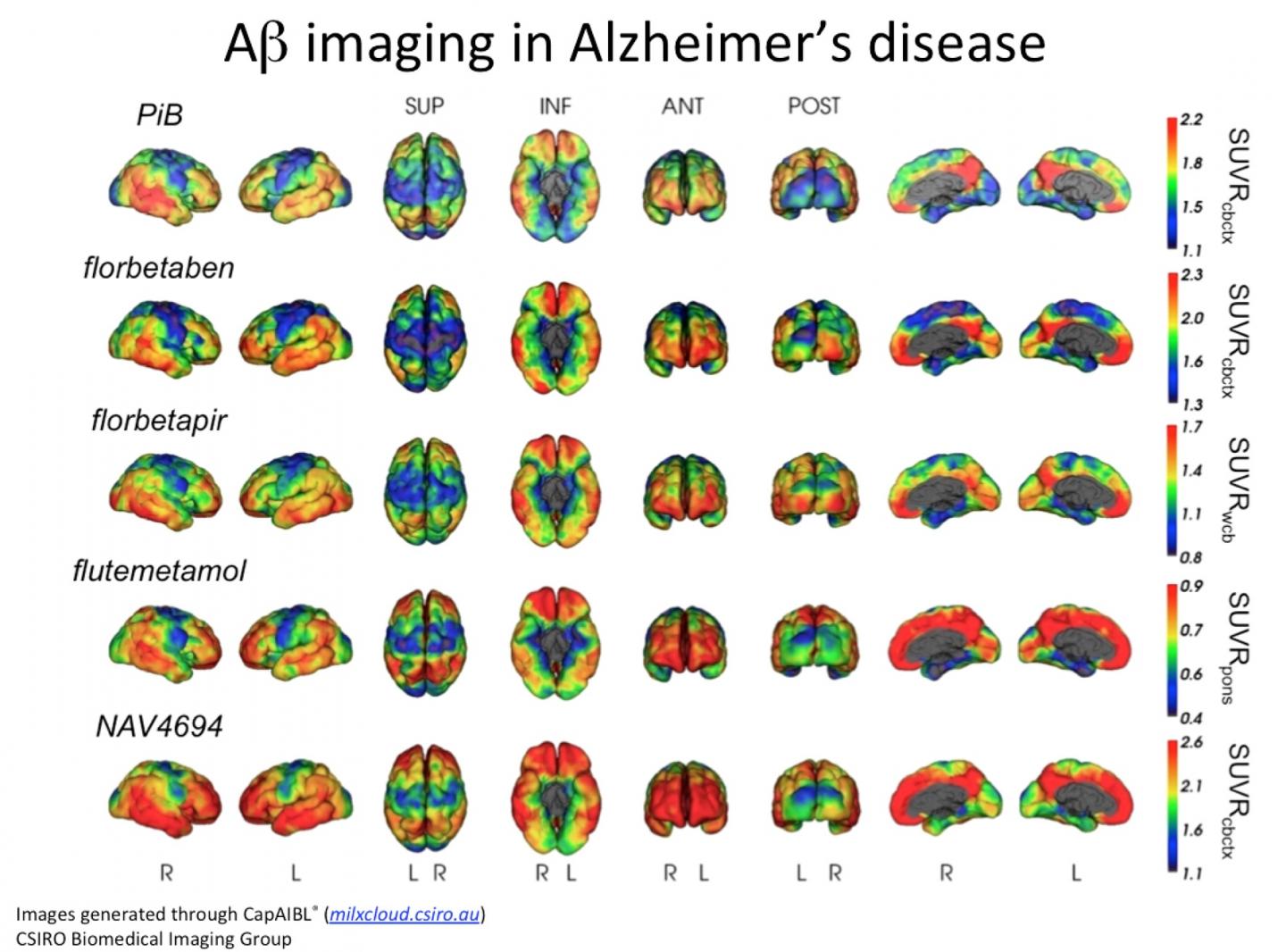CLOUD
Cloud-based neuroimaging analysis could aid Alzheimer's diagnosis

Online image data processing could standardize state-of-the-art molecular imaging techniques
Alzheimer's disease remains a chronic, incurable neurodegenerative disease and a worldwide health concern. Equally as important as developing comprehensive diagnostic tests is finding a means of normalizing all the ensuing data--and that technology has arrived, say researchers at the 2015 Annual Meeting of the Society of Nuclear Medicine and Molecular Imaging (SNMMI).
The novel cloud-based software analyzes imaging data from a method of molecular imaging called positron emission tomography (PET). Different from X-ray and CT scanners, PET allows the visualization of physiological functions, including processes taking place in vital brain anatomy. Nuclear medicine physicians use PET to highlight abnormal patterns of proteins strongly linked to the development of Alzheimer's. These naturally occurring proteins include beta-amyloid, associated with the build-up of plaques, and tau, linked to neurotoxic tangles in the brain. A range of PET and magnetic resonance imaging (MRI) tracers are used to find these and other signs of neurodegenerative disease. However, clinical evaluation can vary due to differences in imaging protocols and discrepancies in visual interpretation, which proves challenging for even the most highly trained specialist.
Scientists and programmers have created a cloud-based imaging software that quantifies and compares PET data in a standardized format. Within a couple of hours, this web-based computing platform can analyze and report on data obtained from a range of PET imaging techniques. If implemented, this software could revolutionize the standard of care for patients and families awaiting a difficult diagnosis.
"This program could allow health professionals to provide earlier and more accurate diagnoses with more confidence, which could lead to earlier and more appropriate treatment for neurodegenerative disease," said Victor Villemagne, MD, a leading molecular imaging researcher at Austin Health, Heidelberg in Victoria, Australia. "The reporting could also be used to make diagnostic information more accessible to patients and their caregivers."
For this study, researchers involved in the Australian Imaging, Biomarker and Lifestyle (AIBL) Flagship Study applied the program, called Computational Analysis of PET (CapAIBL) to imaging data from 454 participants scanned using both MRI and PET. The latter was performed with one of six injectable imaging agents that combine a small amount of radioactive material with a molecular compound that binds with amyloid in the brain. The research showed that CapAIBL was able to quantify PET data accurately without the use of additional MRI scans and with consistent results using all of the assessed imaging agents.
"This innovative program uses a process called 'machine learning' to compare patients' scans with a range of normal and abnormal scans previously processed using MRI to find the closest match and then uses this information to analyze the information with no need for a new MRI," said Villemagne. "Much like a blood test, the results are presented as a number along a range from normal to abnormal and also mapped using a visual representation of patients' brains."
The study included a number of PET imaging techniques using agents that bind to amyloid deposits in the brain: 381 PET scans using the imaging agent carbon-11 Pittsburgh compound B (C-11 PiB); 180 scans using fluoride-18 (F-18) flutemetamol; 171 scans using F-18 florbetapir; 148 scans using F-18 florbetaben; 47 scans using F-18 NAV4694; and 34 scans using F-18 fluorodeoxyglucose (FDG), a common radiotracer that gauges cellular metabolism by mimicking glucose as a source of fuel inside the cells. The next phase of research is set to include PET data using tau imaging agents, which could provide additional information about disease progression, either alone or in conjunction with amyloid imaging.
An estimated 47.5 million people have been diagnosed with dementia worldwide, with 7.7 million new cases reported annually. Alzheimer's disease accounts for as much as 70 percent of these cases, according to 2015 World Health Organization (WHO) statistics.


 How to resolve AdBlock issue?
How to resolve AdBlock issue?